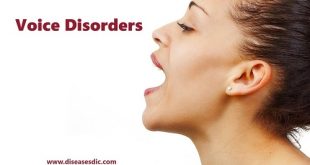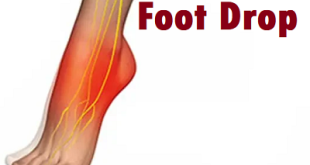What is a vestibular migraine?
Vestibular migraine (also referred to as migrainous vertigo, migraine-related dizziness, vestibular migraine, or migraine with prominent vertigo) is a type of migraine where people experience a combination of vertigo, dizziness, or balance problems with other migraine symptoms.
Migraine is usually associated with a range of typical symptoms alongside headache including nausea and/or vomiting, sensitivity to light (photophobia), sensitivity to sound (phonophobia), and a sensitivity to the movement (for some people exercise can make their headache worse). These symptoms all feature in the criteria used to diagnose migraine.
However, there are other migraine symptoms that are not included in the criteria used to make a diagnosis (despite them being common). These include vertigo, sensitivity to smells (osmophobia), light causing pain not just sensitivity (photic allodynia), and sensitivity to touch on the head or face (cranial allodynia).
Pathophysiology
The pathophysiology of vestibular migraine has not been established. Observations carried out during episodes and interictal eye movement abnormalities suggest that it is a central vestibular disorder, but peripheral vestibular causes have also been discussed. Except for basilar-type migraine, an ‘aura-type’ mechanism is hypothetical. Cortical spreading depression is assumed to be the mechanism for migraine aura and in theory, this mechanism is also possible in the cerebellum. The vascular theory of migraine is no longer considered valid; instead, migraine is considered to be a brain disorder. For vestibular migraine, the concept of an ion-channel disorder is particularly interesting because different mutations of the CACNA1A gene coding for a transmembrane component of a neuronal calcium channel can provoke familial hemiplegic migraine or episodic ataxia type 2. However, several candidate genes coding for ion-channel proteins have not been found in a population with vestibular migraine
Causes and triggers of vestibular migraines
Doctors aren’t certain what causes vestibular migraines, but some believe that the abnormal release of chemicals in the brain plays a role.
Some of the same factors that trigger other kinds of migraines can trigger a vestibular migraine, including:
- Stress
- Lack of sleep
- Dehydration
- Weather changes, or changes in barometric pressure
- Menstruation
Certain foods and drinks can also trigger a vestibular migraine:
- Chocolate
- Red wine
- Aged cheeses
- Monosodium glutamate (MSG)
- Processed meats
- Coffee
- Sodas with caffeine
Women are at a greater risk for getting vestibular migraines. Doctors suspect that vestibular migraines run in families, but studies have not yet proven that link.
What are the Symptoms?
Vestibular migraines don’t always cause headaches. The main symptom is dizziness that comes and goes. Vestibular refers to the inner ear, which controls your hearing and balance. If you’re having a vestibular migraine, you may feel:
- Dizziness that lasts more than a few minutes
- Nausea and vomiting
- Balance problems
- Extreme motion sensitivity — feeling sick or dizzy when you move your head, eyes, or body
- Feeling disoriented or confused
- Feeling unsteady, like you’re in a rocking boat
- Sensitivity to sound
You could get dizzy and have balance problems without having a migraine at all. Other times, the vertigo symptoms happen before, during, or after the headache. Sometimes, you might have migraines for years before the vertigo symptoms begin.
Complications
- Photophobia (light sensitivity)
- Phonophobia (sound sensitivity)
- Nausea and related symptoms
- Headaches
- Tinnitus
- Visual aura
- Nystagmus or abnormal eye movements
How is vestibular migraine diagnosed?
Vestibular migraines can be tricky to diagnose because there’s not a clear-cut test for it. Instead, your doctor will discuss your symptoms and history and consider factors laid out by guidelines in the International Classification of Headache Disorders:
- Have you had at least five moderate or severe vertigo episodes lasting 5 minutes to 72 hours?
- Have you previously or do you still get migraines with or without an aura?
- At least 50 percent of the vertigo episodes also involved at least one of the following:
- Painful sensitivity to light, known as photophobia, or to sound, known as phonophobia
- a visual aura
- a headache involving at least two of these characteristics:
- It’s centered on one side of your head.
- It feels like it’s pulsating.
- The intensity is moderate or severe.
- The headache worsens with routine physical activity.
- Is there another condition that better explains your symptoms?
In order to treat you best, your doctor will want to rule out these other conditions that could be causing the symptoms:
- Nerve irritation or fluid leaks in your inner ear
- Transient ischemic attacks (TIAs), also called ministrokes
- Meniere’s disease (an inner ear disorder)
- Benign positional vertigo (BPV), which causes brief periods of mild or intense dizziness
Treatment for vestibular migraine
The treatment of a vestibular migraine is similar to other migraine therapies and usually includes a combination of several treatment modalities. With regard to medications, oftentimes the drugs that relieve dizziness do not improve headaches and vice versa.
Treatments and prevention strategies include:
Avoidance of triggers: One of the first and most important steps is to recognize (and avoid, when possible) anything that triggers migraines. This may include certain foods, sleep loss, or bright lights for starters. The visual motion may sometimes trigger a vestibular migraine (think of looking out a car window while riding).
Acute migraine medications: Medications to treat acute migraine episodes include triptans, including Relpax (eletriptan), Imitrex (sumatriptan), and several others in this class10.
Chronic migraine medications: There are several classes of medications that may be tried in order to reduce the number or frequency of migraine episodes. These can include anti-seizure medications such as Neurontin (gabapentin), beta-blockers, tricyclic antidepressants, calcium channel blockers, and more.
Nausea and dizziness medications: Antiemetics such as Thorazine (chlorpromazine) or Reglan (metoclopramide) are useful for controlling nausea; Antivert (meclizine) is used for dizziness.
Behavioral approaches: Behavioral therapies for migraine, such as relaxation therapy, cognitive behavioral therapy, and biofeedback can be an important part of treatment.
Physical therapy: Physical therapy can help control instability while walking with vestibular migraine.
Living with vestibular migraine
Lifestyle changes and preventive medication should help to reduce the frequency of migraine episodes.
It is helpful to pinpoint personal triggers, such as alcohol or lack of sleep, and try to avoid these. Making a note of every migraine episode can help someone to find any common factors that could be triggered.
During a migraine episode, many people will find that lying down in a dark room or sleeping can help.
Taking over-the-counter pain or nausea-relief medication at the first sign of migraine may reduce the severity of the episode.
Outlook
Vestibular migraine is a serious, disorientating condition that can make people feel too unwell to complete basic tasks, such as sleeping, walking, or driving.
Getting to know personal triggers, consulting a doctor about medication and self-care, and making lifestyle changes can reduce the episodes of vestibular migraine and ensure a good recovery.
 Diseases Treatments Dictionary This is complete solution to read all diseases treatments Which covers Prevention, Causes, Symptoms, Medical Terms, Drugs, Prescription, Natural Remedies with cures and Treatments. Most of the common diseases were listed in names, split with categories.
Diseases Treatments Dictionary This is complete solution to read all diseases treatments Which covers Prevention, Causes, Symptoms, Medical Terms, Drugs, Prescription, Natural Remedies with cures and Treatments. Most of the common diseases were listed in names, split with categories.







